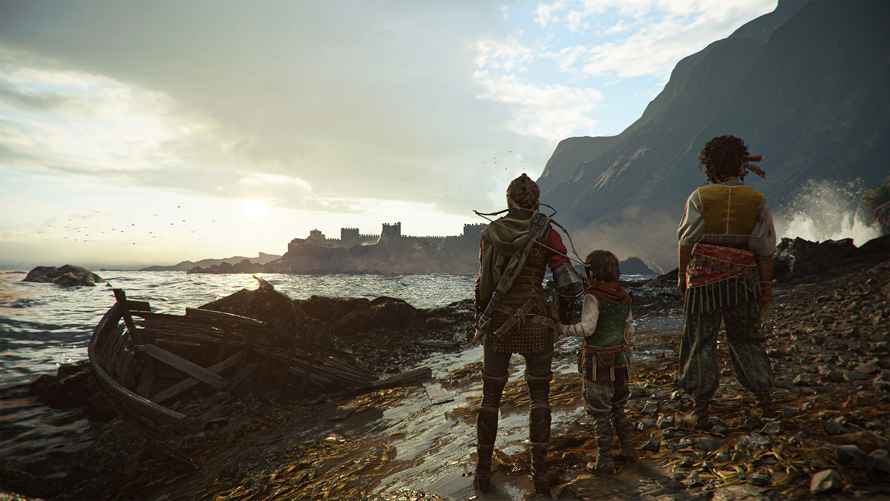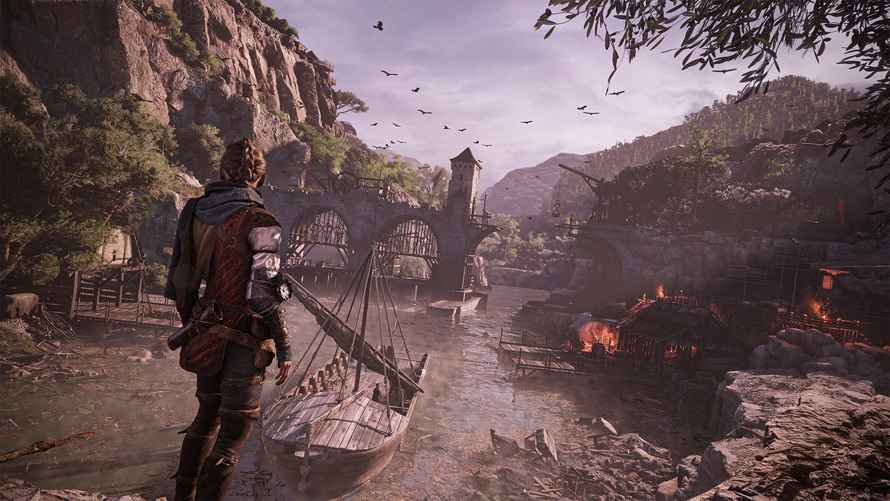A Plague Tale: Requiem Review-Spoiler Free
If you’re like me and play a lot of games, you probably love happy surprises as much as I do. 2019’s A Plague Tale: Innocence was definitely one of those come-from-out-of-nowhere gems. It had incredible visuals, outstanding acting, a genuinely original premise, and engaging action. While A Plague Tale: Requiem can’t take us by surprise, it offers something even better. It improves on the original in both big and subtle ways.
Return to Form and to France
You don’t need to have played the first game to enjoy A Plague Tale: Requiem. The game uses a long tutorial prologue to reintroduce both the main players and gameplay systems. Returning players will feel right at home. New players will have no trouble learning the game’s combat and stealth mechanics. The only downside for veterans of the first game is that some of the story exposition is already well known, but at least Requiem uses a logical conceit to introduce it again.
Set in 14th-century France, Requiem takes place six months after the first game. Many of the same characters return. You play as Amicia, who is escorting her younger brother Hugo across the plague-ravished countryside. Hugo has a mysterious condition that gives him extrasensory powers, making him a target of the repressive French Inquisition. Hugo dreams of an island that might offer the cure or explanation of his disease, so the siblings’ goal is to find and reach the island. While much of the game still takes place in castle sewers, abandoned hospitals piled high with corpses, and dark passages, the move to sunny Provence in southern France is a welcome one. It is a colorful, hopeful landscape with quaint, sun-drenched villages, and lush pastures and forests. Throughout its twenty or so hours of story, Requiem explores a wide range of environments. It never stays in one place too long.

Although there are a handful of main characters and a cast of new NPCs, the relationship between Amicia and Hugo remains at the heart of Requiem’s narrative. As in the first game, it is beautifully written, believable, and emotionally compelling. It’s also a bit more complex, informed by the narrative from A Plague Tale: Innocence. Amicia is fiercely protective but frightened by both her younger brother’s worsening condition and his mysterious abilities. While the voice acting is excellent, every now and then the dialogue slips into an oddly modern idiom.
The Power of Stealth
Narrative and Amicia and Hugo’s relationship might drive A Plague Tale: Requiem, but action and gameplay mechanics keep it engaging. The sequel doesn’t significantly change the fundamentals introduced in Innocence but deepens them in every way. Amicia still relies on her slingshot to take down easy enemies, but she now has a crossbow, a knife and the ability to counter enemy attacks. Most significantly, she can craft alchemical recipes that add flame, fire-spreading tar, or water to her thrown pots.

In most cases, A Plague Tale: Requiem guides its characters to use stealth and avoid combat whenever possible. Just like the first game, much of Requiem’s forward momentum is gated by environmental puzzles that allow Amicia and Hugo to stealth around enemies. This time, though, the puzzles are more challenging and the areas denser with both enemies and opportunities. Soldiers of the Inquisition detect intruders very easily and are nearly impossible to defeat in number. Unlike the first game, Amicia can take a hit and even re-enter stealth if she escapes combat. It soon becomes apparent that Requiem demands a methodical, slow approach to most situations. Now and then, characters are asked to speed through areas, but these can be mechanically frustrating.
The plague-bearing rats swarm in numbers even greater than before, attacking in impressive, terrifying waves. Hugo’s powers, flame and light continue to repel them. Finding or creating islands of light or fire or using the rats to kill enemies is still fun and a challenging puzzle element. There are moments, though, when the game’s mechanics can frustrate, or the camera balks in close quarters. Often Amecia has to move a cart into position as a platform. This is never fun.
The Devil Hides in the Details
Environments in A Plague Tale: Requiem aren’t the inviting, open worlds they appear to be. The game overall funnels the player down a relatively narrow path, but the barriers are subtle. There’s no map, but there’s no need for one. Where you’re going is always clear. The environmental puzzles are clearly laid out, but Requiem isn’t the kind of game where there are multiple solutions. That’s either a relief or a bit frustrating, depending on your need for creativity.
Though Requiem’s world is not open, that’s a good thing, as it allows for the focus to be on detail and spectacular design and lighting. The first game looked amazing, Requiem looks even better. The game world might be closer to a movie set middle ages than precise historical reality, but no matter. The textures are rich, the towns are alive and lived in, and the countryside of southern France looks like a living postcard.

The game’s audio is equally impressive. The lip-syncing might not be perfect, but the game’s performances and voice acting are stellar. Fans of AMSR will enjoy the effective whispers as Hugo and Amicia stealth around enemies. Sometimes the duo can be a little repetitively chatty in the height of battle, but that’s about the closest I can come to being critical of the sound design. The musical score by Olivier Deriviere is beautiful and understated. It uses a mixture of medieval and modern instruments, melodies, and modes to sound historically appropriate without slavishly quoting actual music of the time.
A Tale Worth Telling
A Plague Tale: Requiem doesn’t reinvent what made the first game great. Instead, it builds on what worked and makes everything better. From graphics and sound to combat, A Plague Tale: Requiem adds a layer of depth a polish we didn’t even realize was missing the first time around. A lot of gamers missed A Plague Tale: Innocence, but everyone should play this altogether amazing sequel.
***PlayStation 5 code provided by the publisher for review***
A Plague Tale: Requiem Guides:
- A Plague Tale Requiem Strategy Guide
- A Plague Tale Requiem Walkthrough
- A Plague Tale Requiem Collectible Locations
The Good
- Fantastic art, level design and world building
- Engaging story and characters
- Combat mechanics and puzzles are well done
- Excellent performances
The Bad
- Some frustrating camera and movement issues
- A bit of texture pop in
- Many story beats return from the first game

